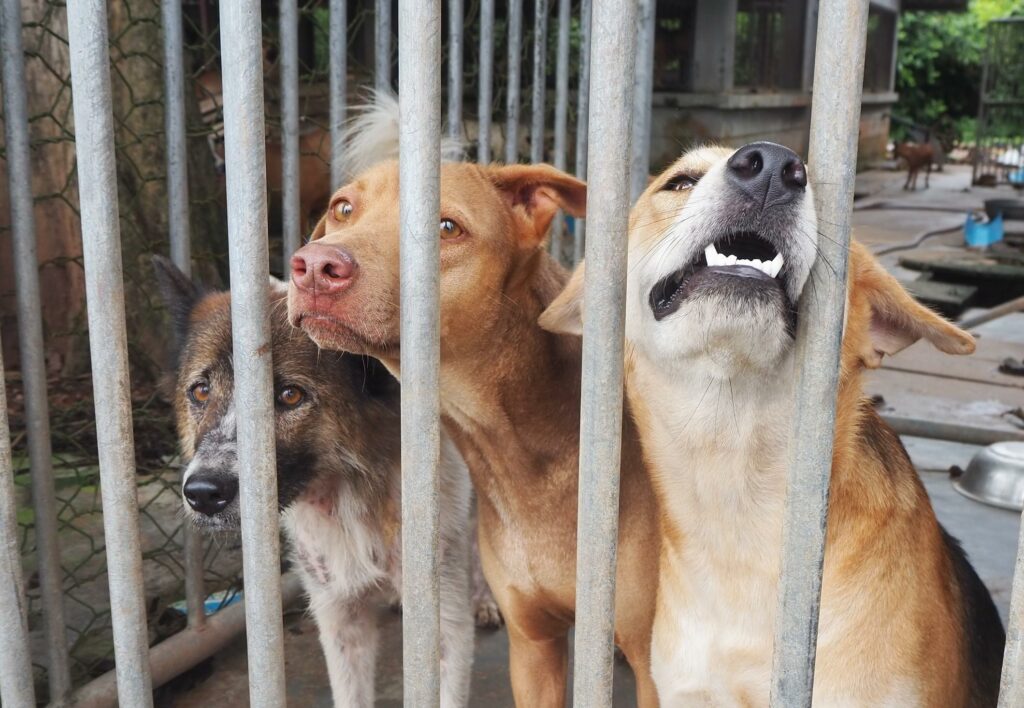The Global Stray Animal Crisis: How You Can Help
Stray animals, also known as street animals or feral animals, are animals that roam freely without an owner or home. The global stray animal crisis is a global issue that affects communities worldwide, with millions of stray animals struggling to survive in harsh conditions. The sheer number of stray animals indicates a crisis that demands our attention and action.
In this article, we will explore the causes and impacts of the global stray animal crisis, as well as the roles organizations, governments, and individuals play in addressing this issue. Moreover, we will discuss various ways in which you can actively contribute to resolving this crisis and make a positive impact on the lives of stray animals.
Causes of the Stray Animal Crisis
Abandonment by Owners
Many stray animals are the result of irresponsible pet owners who choose to abandon their pets for various reasons. Economic difficulties, lifestyle changes, or simply not understanding the commitment required to care for an animal can lead to abandonment.
Lack of Spaying/Neutering Programs
The lack of accessible and affordable spaying/neutering programs contributes significantly to the stray animal crisis. Uncontrolled breeding leads to exponential population growth, making it difficult to manage and care for stray animals effectively.
Neglect and Abuse
Stray animals often fall victim to neglect and abuse, facing harsh living conditions and suffering from malnutrition, disease, and injuries. Cruelty towards animals perpetuates the stray animal crisis and must be addressed through awareness and legal measures.
Impacts of Stray Animals
Public Health Risks
Stray animals pose potential health risks to communities. They can transmit diseases, such as rabies, through bites or scratches. Additionally, their presence in public spaces can lead to unsanitary conditions and the spread of parasites.
Environmental Concerns
The stray animal crisis also affects the environment. Stray animals may disrupt ecosystems, preying on wildlife or competing for resources. Furthermore, their waste can contribute to pollution and water contamination.
Animal Welfare Issues
The well-being of stray animals is a fundamental concern. They face constant danger, suffering, and starvation. Their lack of shelter and necessary care undermines their quality of life. Addressing their welfare is a moral obligation.

The Role of Organizations and Governments
Animal Rescue and Adoption Centers
Organizations dedicated to rescuing and adopting stray animals play a crucial role in addressing the crisis. These centers provide temporary shelter, necessary medical care, and adoption services, giving stray animals a chance at a better life.
Community Outreach Programs
Creating awareness and promoting responsible pet ownership through community outreach programs are vital aspects of addressing the stray animal crisis. These programs educate individuals about the importance of spaying/neutering, vaccination, and providing proper care for their pets.
Legislation and Policies
Governments have a pivotal role to play in combating the stray animal crisis. Implementing legislation and policies that promote animal welfare, address animal cruelty, and support spaying/neutering programs are essential steps toward resolving the issue.
How Individuals Can Make a Difference
Adopt, Don’t Shop
Choosing to adopt a stray animal rather than purchasing a pet from a breeder or pet store is a significant contribution to reducing the stray population. Adoption not only provides a loving home to a needy animal but also supports rescue organizations.
Foster or Volunteer at Shelters
Fostering or volunteering at animal shelters allows individuals to directly contribute to caring for stray animals. This hands-on approach helps alleviate overcrowding in shelters, providing the animals with temporary homes and necessary socialization.
Donate to Animal Welfare Organizations
Financial contributions to animal welfare organizations enable them to continue their vital work. Donations help cover medical expenses, food, shelter, and other necessary resources for stray animals in need.
Spread Awareness Through Social Media
Utilizing the power of social media, individuals can raise awareness about the stray animal crisis and the importance of responsible pet ownership. Sharing success stories, educational content, and adoption opportunities can inspire others to take action.
Spaying/Neutering Programs
Benefits of Spaying/Neutering
Spaying/neutering programs play a crucial role in preventing further population growth and reducing the number of stray animals. These programs have health benefits, such as reducing the risk of certain cancers and behavioral problems in animals.
Supporting Low-Cost Clinics
Supporting low-cost spaying/neutering clinics makes these services more accessible to pet owners. By making the procedures affordable, individuals are more likely to opt for spaying/neutering, helping alleviate the stray animal crisis.
Educating Communities on Responsible Pet Ownership
Educational campaigns focused on responsible pet ownership can have a significant impact in preventing the abandonment of animals. Teaching communities about the importance of proper care, training, and commitment contributes to a reduction in stray animals.
Importance of Identification and Microchipping
Ensuring Lost Pets can be Reunited with Owners
Providing identification tags and microchipping pets can significantly increase the chances of lost animals being reunited with their owners. This reduces the number of stray animals and provides a sense of security for pet owners.
Reducing the Number of Stray Animals
Identification and microchipping also help reduce the number of stray animals overall. When lost pets can easily be identified, it prevents them from becoming part of the stray population and encourages responsible ownership.
Promoting Responsible Pet Ownership
Providing Proper Care and Nutrition
Proper care, including regular veterinary visits, vaccinations, and a nutritious diet, is essential for pets’ overall well-being. Responsible pet owners prioritize these aspects, reducing the likelihood of animals ending up as strays.
Regular Veterinary Check-Ups
Regular veterinary check-ups help identify and address potential health issues promptly. By ensuring their pets’ health and well-being, owners contribute to the prevention of stray animals.
Training and Socialization
Investing time and effort into training and socializing pets makes them more adaptable and well-behaved. This reduces the likelihood of pets being abandoned due to behavioral problems, indirectly minimizing the stray animal crisis.
The Role of Education and Awareness
Teaching Children About Animal Welfare
Educating children about responsible pet ownership and animal welfare fosters empathy and compassion. By instilling these values early on, we can create a future generation committed to reducing the stray animal crisis.
Encouraging Empathy and Compassion
Promoting empathy and compassion towards animals among adults is equally important. Encouraging individuals to consider the plight of stray animals and take action contributes to resolving the crisis.
Organizing Community Events and Workshops
Arranging community events and workshops focused on the stray animal crisis allows for increased awareness and education. These events bring together like-minded individuals to discuss solutions and promote collective action.
Collaborating with International Partners
Sharing Best Practices and Resources
Collaboration with international partners allows for the sharing of best practices in tackling the stray animal crisis. Learning from successful initiatives from around the world helps improve strategies and outcomes.
Supporting Global Initiatives
Contributing to global initiatives and organizations dedicated to addressing the stray animal crisis expands the impact individuals can make. By supporting these programs, individuals can actively contribute to making a difference globally.
Overcoming Challenges and Obstacles
Lack of Funding
One of the significant challenges in combatting the stray animal crisis is the lack of funding for animal welfare organizations and spaying/neutering programs. Raising awareness about this issue and encouraging donations can help overcome this obstacle.
Limited Resources and Manpower
Insufficient resources and manpower often hinder efforts to address the stray animal crisis effectively. Encouraging more volunteers to participate and advocating for increased support from governments and communities are necessary steps to overcome this challenge.
Cultural and Societal Attitudes Towards Animals
Some cultures or societies may have attitudes towards animals that perpetuate the stray animal crisis. Promoting education and understanding about animal welfare can influence a change in these attitudes, contributing to long-term solutions.
Success Stories and Inspiring Initiatives
Stories of Successful Animal Rescue and Adoption
Sharing success stories of animal rescue and adoption can inspire others to take action and get involved. These stories not only provide hope but also highlight the positive difference individuals and organizations can make in the lives of stray animals.
Innovative Approaches to Tackling the Stray Animal Crisis
The stray animal crisis has led to innovative approaches in various parts of the world. Highlighting these initiatives encourages creativity and out-of-the-box thinking to resolve this global issue.
The Importance of Legislative Support
Implementing Stricter Animal Welfare Laws
Strengthening animal welfare laws and ensuring their effective implementation is necessary to combat the stray animal crisis. These laws can provide guidelines for responsible pet ownership, penalties for abandonment, and regulation of breeding facilities.
Enforcing Penalties for Animal Cruelty
Stricter enforcement of penalties for animal cruelty acts as a deterrent and helps protect both domestic and stray animals. Empowering law enforcement agencies to take action against offenses contributes to reducing the stray animal crisis.
Conclusion
In conclusion, the global stray animal crisis presents a pressing issue that affects the well-being of animals, ecosystems, and communities around the world. Addressing this crisis requires collaborative efforts from organizations, governments, and individuals.
By adopting responsible pet ownership practices, supporting spaying/neutering programs, promoting education and awareness, and advocating for legislative changes, we can make a significant impact and improve the lives of stray animals. Together, we can work towards a future where no animal is left behind.
FAQs: The Global Stray Animal Crisis
- How big is the global stray animal crisis?
The global stray animal crisis is significant, with millions of stray animals struggling to survive without a home or proper care. The exact number of stray animals is difficult to determine due to the decentralized nature of the issue, but it is undoubtedly a global concern. - How can I help stray animals in my local community?
You can help stray animals in your local community by adopting or fostering a stray animal, volunteering at animal shelters, supporting spaying/neutering programs, and spreading awareness about responsible pet ownership. These actions contribute to reducing the stray animal population and improving their well-being. - What are the risks of stray animals to public health?
Stray animals can pose risks to public health by potentially transmitting diseases such as rabies through bites or scratches. Their presence in public spaces can also contribute to unsanitary conditions and the spread of parasites. - Are there success stories in resolving the stray animal crisis?
Yes, there are numerous success stories where organizations and individuals have made significant progress in tackling the stray animal crisis. These success stories highlight the positive difference that can be made through dedicated efforts and provide inspiration for others to get involved. - How can governments contribute to resolving the stray animal crisis?
Governments can contribute to resolving the stray animal crisis by implementing strict animal welfare laws, supporting spaying/neutering programs, enforcing penalties for animal cruelty, and providing funding and resources to animal welfare organizations. Their involvement is crucial in creating systemic change and addressing the root causes of the issue.
Also Read:
Pet Care Tips for Cats for Beginners
Pet Care Tips for Dogs for Beginners



